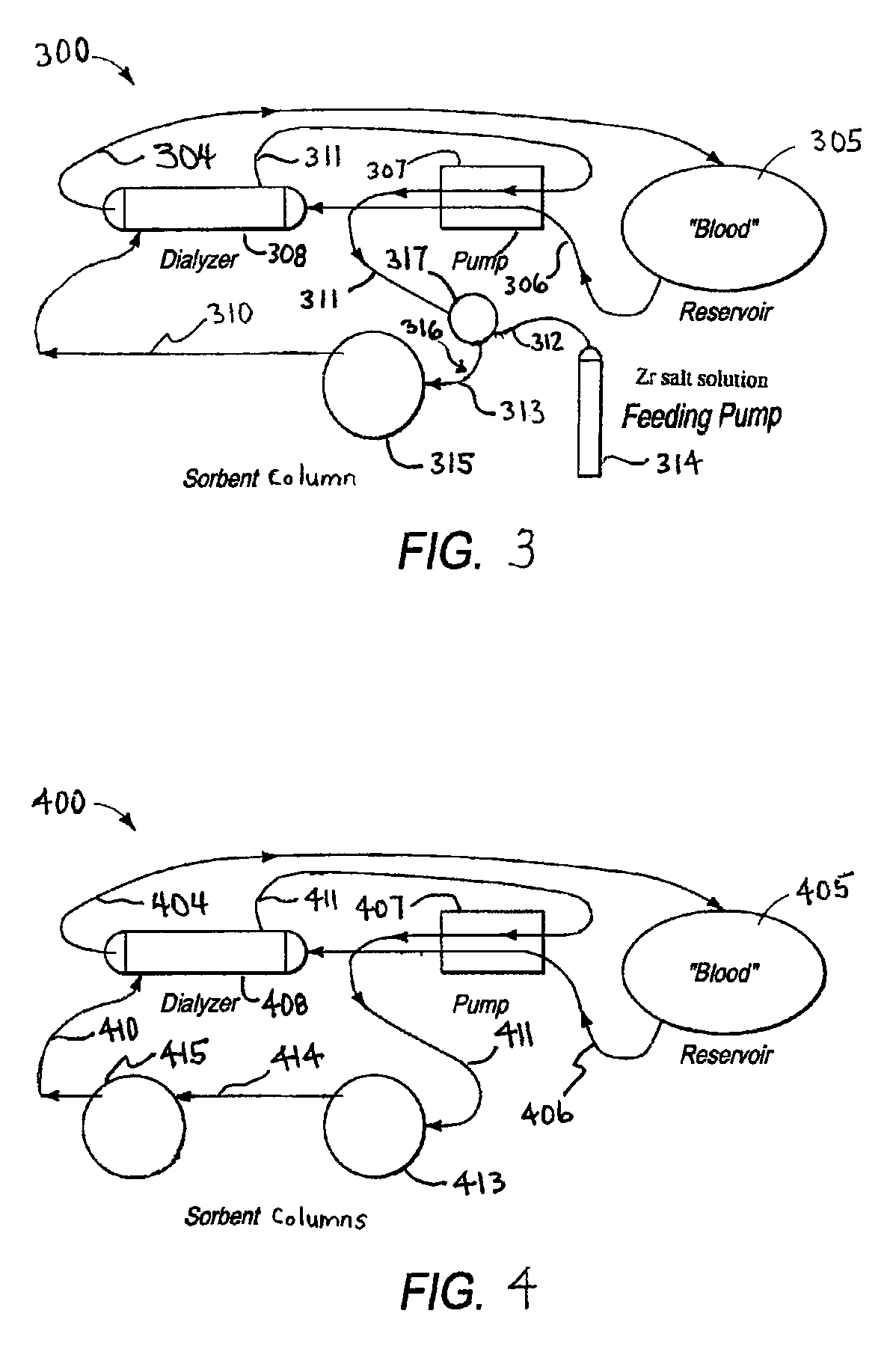Method and system of enhancing removal of toxic anions and organic solutes in sorbent dialysis
a sorbent dialysis and organic solute technology, applied in the field of sorbent dialysis, can solve the problems of insufficient removal of uremic toxins in conventional sorbent dialysis, accumulation of body fluids,
- Summary
- Abstract
- Description
- Claims
- Application Information
AI Technical Summary
Benefits of technology
Problems solved by technology
Method used
Image
Examples
example 1
[0046]The anion adsorption capacity of a zirconium ion source and toxin adsorption column was tested in experiments which simulated the removal of sulfate from tap water before the make up of dialysate and determined if desorption of sulfate by phosphate in dialysate occurred subsequently during dialysis. A column without the zirconium ion source was tested for comparison.
[0047]The sulfate adsorption column test specifications used for these experiments were as follows:
Column size: 1 inch diameter column containing 20 gm of HZO with and without a Zr ion loaded preceding layer.
Flow rate: 10 ml per minute.
Initial water treatment: 1 L of tap water containing sulfate at 25 mg / dL or 250 ppm is treated by the column for sulfate removal.
Sequential treatment of dialysate:
2 L of dialysate containing 25 mEq / L NaHCO3, 120 mEq / L NaCl, and 7.4 mg / dL PO4−P was treated by the column for phosphate removal.
[0048]A single pass system was set up in which the tap water, and then the dialysate, was pump...
example 2
[0052]The anion adsorption capacity of a zirconium ion source and toxin adsorption column was tested on dialysate in experiments which used the following test specifications on a test system which was otherwise similar to that used for the experiments of Example 1. 2 L of the dialysate containing sulfate at 25 mg / dL was passed through a 2 inch diameter column containing 20 gm HZO.acetate (HZO.Ac) preceded by a layer of 10-20 gm Zr ion loaded ZP at the flow rate of 25 mL / minute. A column with the HZO.Ac and without the zirconium ion source was tested for comparison. Sulfate capacity was analyzed by the total amount of effluent with no detectable sulfate. Results of the experiments are shown in Table 1. In the table, “DL” refers to detection limit, and ICP” refers to Inductively coupled plasma atomic emission spectroscopy. In Test No. 8 of Table 1, no ZP loaded with Zr ion is used.
[0053]
TABLE 1AmountVolume ofZr IonDialysateLoadedTreatedAdsorptionTest AmountZP (AZP orBelow DL ofof Sulf...
PUM
| Property | Measurement | Unit |
|---|---|---|
| adsorption capacity | aaaaa | aaaaa |
| adsorption capacity | aaaaa | aaaaa |
| adsorption capacity | aaaaa | aaaaa |
Abstract
Description
Claims
Application Information
 Login to View More
Login to View More - R&D
- Intellectual Property
- Life Sciences
- Materials
- Tech Scout
- Unparalleled Data Quality
- Higher Quality Content
- 60% Fewer Hallucinations
Browse by: Latest US Patents, China's latest patents, Technical Efficacy Thesaurus, Application Domain, Technology Topic, Popular Technical Reports.
© 2025 PatSnap. All rights reserved.Legal|Privacy policy|Modern Slavery Act Transparency Statement|Sitemap|About US| Contact US: help@patsnap.com



